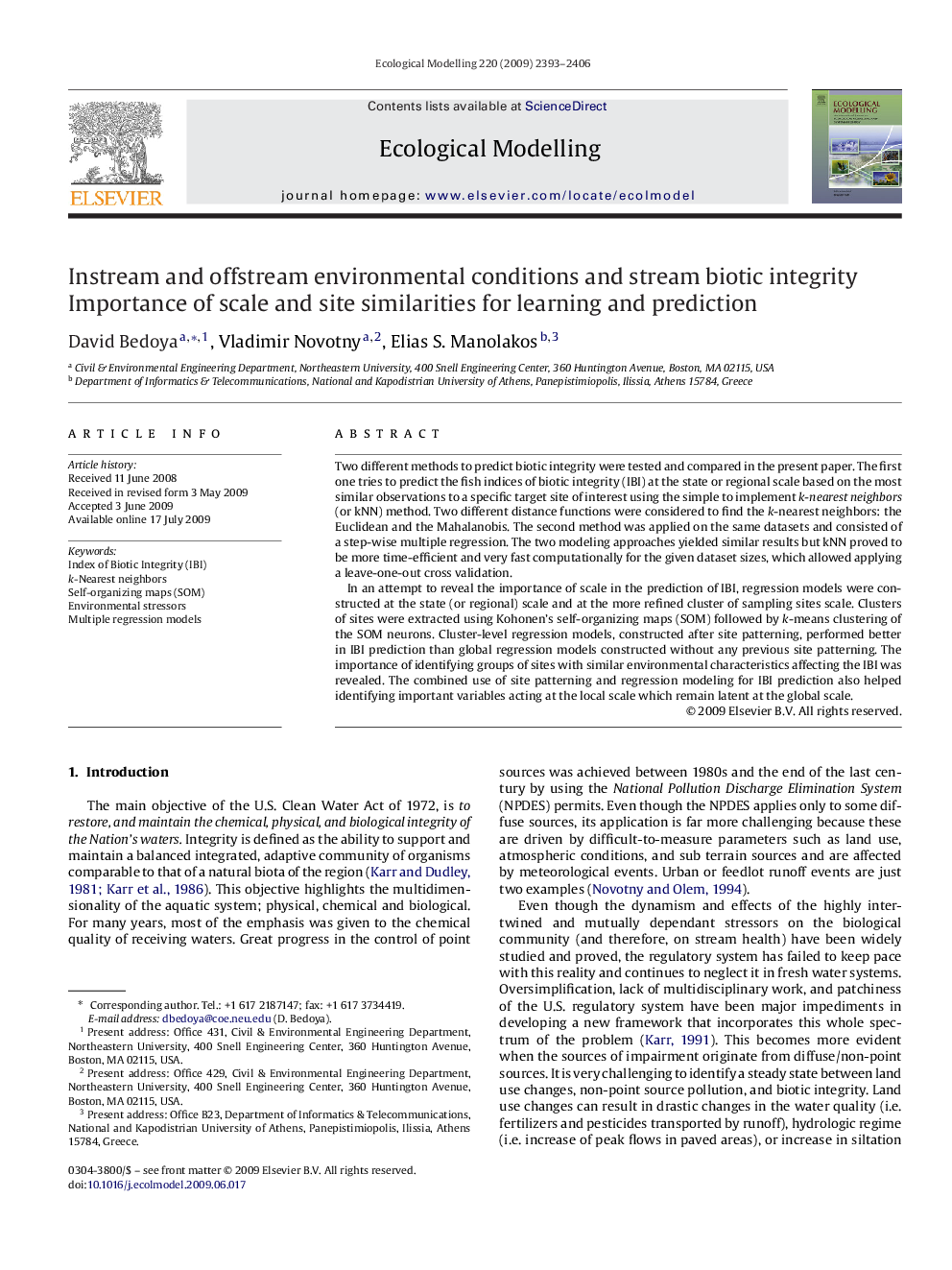| Article ID | Journal | Published Year | Pages | File Type |
|---|---|---|---|---|
| 4377657 | Ecological Modelling | 2009 | 14 Pages |
Two different methods to predict biotic integrity were tested and compared in the present paper. The first one tries to predict the fish indices of biotic integrity (IBI) at the state or regional scale based on the most similar observations to a specific target site of interest using the simple to implement k-nearest neighbors (or kNN) method. Two different distance functions were considered to find the k-nearest neighbors: the Euclidean and the Mahalanobis. The second method was applied on the same datasets and consisted of a step-wise multiple regression. The two modeling approaches yielded similar results but kNN proved to be more time-efficient and very fast computationally for the given dataset sizes, which allowed applying a leave-one-out cross validation.In an attempt to reveal the importance of scale in the prediction of IBI, regression models were constructed at the state (or regional) scale and at the more refined cluster of sampling sites scale. Clusters of sites were extracted using Kohonen's self-organizing maps (SOM) followed by k-means clustering of the SOM neurons. Cluster-level regression models, constructed after site patterning, performed better in IBI prediction than global regression models constructed without any previous site patterning. The importance of identifying groups of sites with similar environmental characteristics affecting the IBI was revealed. The combined use of site patterning and regression modeling for IBI prediction also helped identifying important variables acting at the local scale which remain latent at the global scale.
